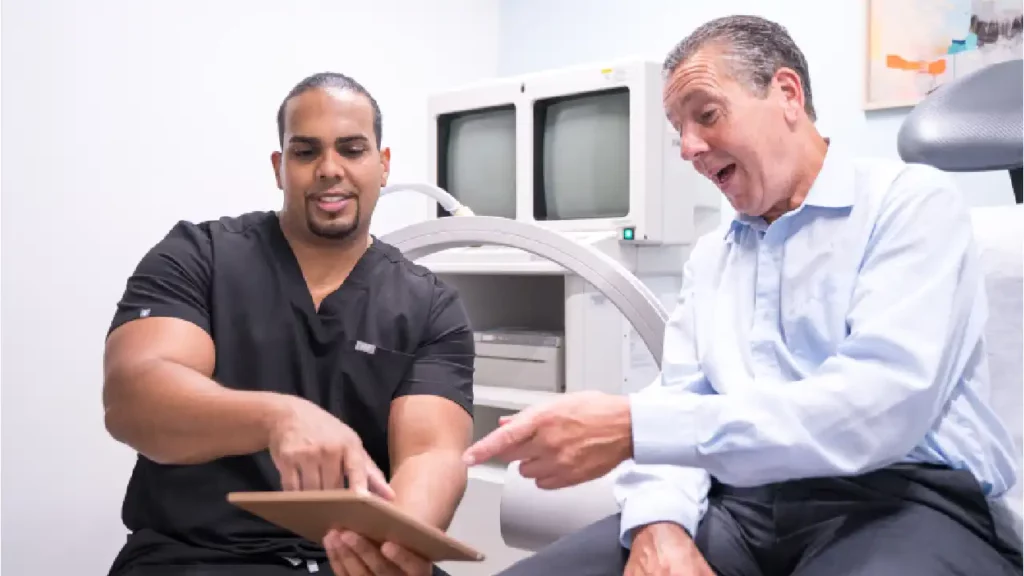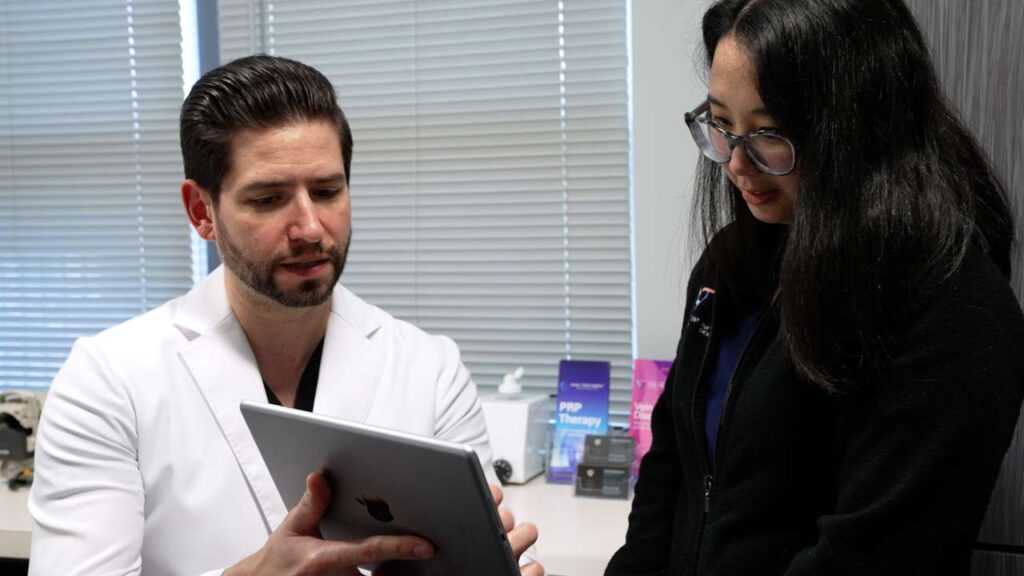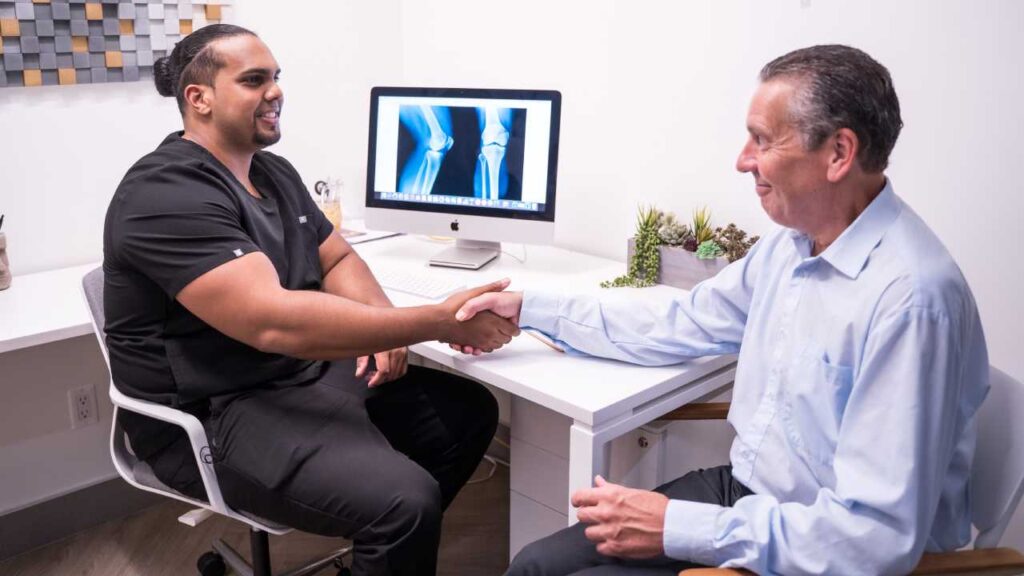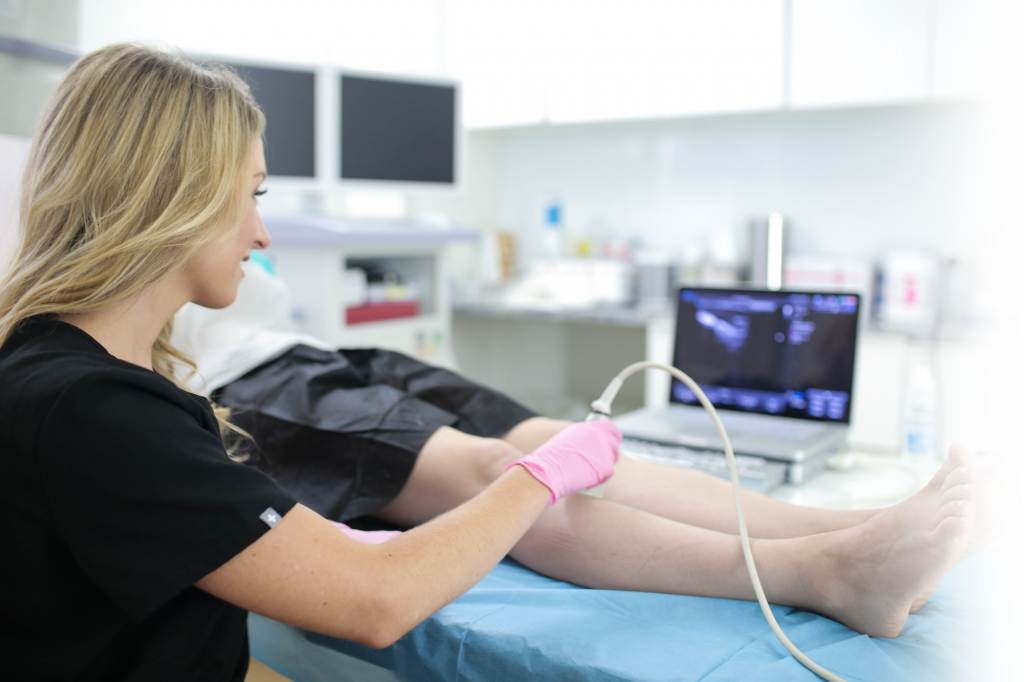How Long Does It Take for Laser Treatment to Work?
If you’re wondering, “How long does it take for spider veins to disappear after laser treatment,” the answer depends on the type of laser and degree of vein damage. It also depends on who applied the treatment and their level of training. For instance, using a surface laser treatment for widespread spider veins might require multiple sessions. Whereas an endovenous laser procedure for the same veins might only require one treatment. Book an appointment with Harvard-trained vein doctors in New Jersey to find the ideal laser procedure for you.
Laser treatments take anywhere from one to twelve weeks to work. The pace depends on several variables, but the results are faster than with surgeries like phlebectomy. There are several types of lasers used to treat varicose veins and spider veins. Some are non-invasive and others are minimally invasive.
Non-invasive lasers are applied at the skin’s surface. These include pulsed dye lasers and intensive pulsed lasers. They send wavelengths of thermal energy through the skin to coagulate the blood inside the vein. Minimally invasive lasers are applied directly on the vein. The vein specialist inserts a small catheter in the skin through which a laser fiber is threaded and positioned on the vein. Once it’s activated, the laser heats the vein’s walls and causes the blood vessel to close.
For quick results from laser treatment, you need the right laser and the right vein specialist. Qualified vein doctors use ultrasound guidance to find the source of the damaged vein, position the device, and observe the treatment to ensure it works. Cosmetic vein centers lack training in minimally invasive lasers. Choose a board certified vein doctor for access to the latest laser technology.
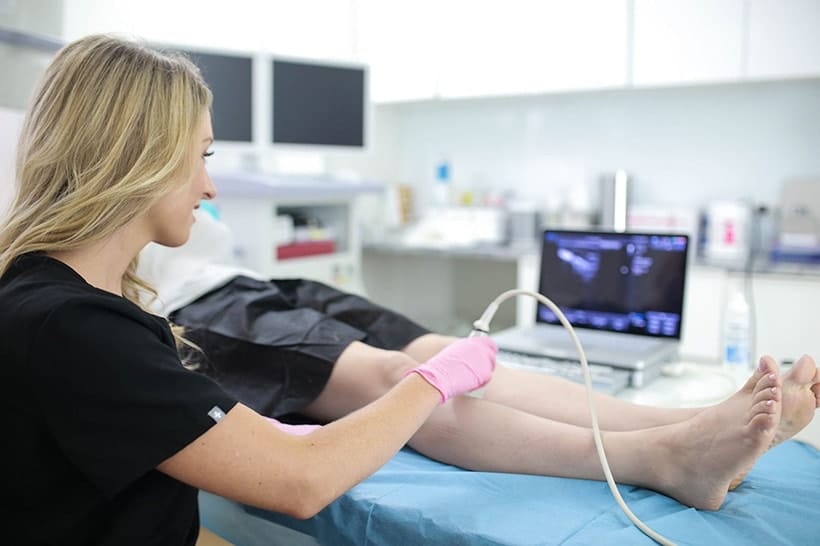
Do Endovenous Lasers and Surface Lasers Take the Same Time?
Endovenous lasers are placed directly on the vein. So, they work best for larger or deeper spider veins and varicose veins. Surface lasers can’t get hot enough to treat such veins without damaging the skin. But endovenous lasers are inserted through the skin and preceded by an injection of tumescent anesthesia to protect the adjacent area.
Surface lasers are quick, but not effective for deeper leg veins. Endovenous lasers are also fast, but not necessary for tiny facial spider veins. The fastest treatment is the one that’s right for you since that’s how you get lasting results. Surface lasers and endovenous lasers are both non-surgical and performed in the doctor’s office. They don’t require general anesthesia. Most treatments take about 30 minutes, depending on the number of veins being treated.
Does a Laser Beam or Laser Fiber Treat Spider Veins Faster?
Surface laser beams are quickest for facial spider veins and small leg veins that aren’t caused by Chronic Venous Insufficiency. This common disease involves valve failure in deeper veins that can’t be resolved with surface lasers. Endovenous laser fibers are quickest for spider veins in the legs, varicose veins, and the faulty valves that produce both. It’s not just a matter of choosing the fastest treatment. It’s a matter of choosing the right treatment, so you don’t have to try another procedure. All laser treatments are quicker than surgery, so ask your vein doctor which laser will work for you.
Will You Need Additional Treatments to Get Results?
Some patients need more than one session, particularly when they use surface lasers. These devices can cause irritation, blistering, and scabbing on the skin, so they can’t be used excessively in a single session. Endovenous lasers are placed on the vein, not the skin, and they’re buffered by tumescent anesthesia. As such, vein doctors can accomplish more with an endovenous procedure, potentially limiting your visits to one.
Once the Vein Is Closed, Can It Return?
There are several reasons to choose a board certified vein doctor over a cosmetic vein center. Cost, safety, and technology are among them. A recurrence of spider veins and varicose veins is also an important reason. Most cosmetic vein specialists don’t use ultrasound guidance to locate the origin of the spider vein or ensure precise placement of treatment.
If you receive a surface laser treatment, but you have untreated Chronic Venous Insufficiency, more spider veins and varicose veins will likely appear. And if the vein specialist doesn’t use image-guided procedures, they might fail to treat the entire length of the damaged vein, or even treat the right vein. Choose qualified vein doctors so the closed vein will not return.
Are Lasers the Best Way to Collapse and Seal Spider Veins?
Lasers are the best way to collapse and seal certain spider veins. But no treatment is right for everyone. Patients with sensitive skin might not be amenable to surface lasers. And patients with an allergy to tumescent anesthesia should consider an alternative to endovenous lasers. There are several safe options for closing veins, including sclerotherapy, radiofrequency ablation, vein adhesives, and mechanochemical ablation. A small number of patients might also need surgery, but this is more likely for varicose veins than spider veins.
Are Lasers Fast for Large Blood Vessels Like Varicose Veins?
Surface lasers are not successful for most varicose veins. The amount of heat needed to close a large vein would damage the surface of the skin. In addition, most varicose veins require an investigation of valves in deeper veins. For these reasons, an endovenous laser is a quicker solution than surface lasers for varicose veins.
But lasers are not the only quick option for varicosities. Sclerotherapy does not require tumescent anesthesia, so it’s a quick alternative to lasers. Radiofrequency ablation is an alternative that destroys veins at a lower temperature, making it preferable over lasers for many patients. Vein adhesives are also quick to inject and might be the right choice for your damaged veins.
Do You Need to Wear Compression Stockings After Lasers?
Some patients need to wear compression stockings after endovenous laser treatment on their legs. Patients who have surface laser treatment, particularly on facial spider veins, rarely need compression therapy. Compression helps reduce swelling and enhance blood flow, so ice packs and elevating the legs are additional ways to accomplish this.
Where Should You Treat Varicose Veins and Spider Veins in NJ?
The best place to treat spider veins and varicose veins in New Jersey is a vein center that’s fully accredited and equipped. Visit our award-winning vein centers in Clifton, Scotch Plains, Paramus, Woodbridge, or Woodland Park for world-class care. Some patients have small, asymptomatic veins that turn out to signify blood clots or vein disease. Others have large varicose veins that look unpleasant but don’t pose any current danger.
The way your veins look at the surface isn’t always indicative of what’s going on beneath the skin. So, choose a board certified vein doctor with comprehensive technology and training. Doing so not only improves your outcome, but also helps you acquire insurance coverage since these procedures are FDA approved.
